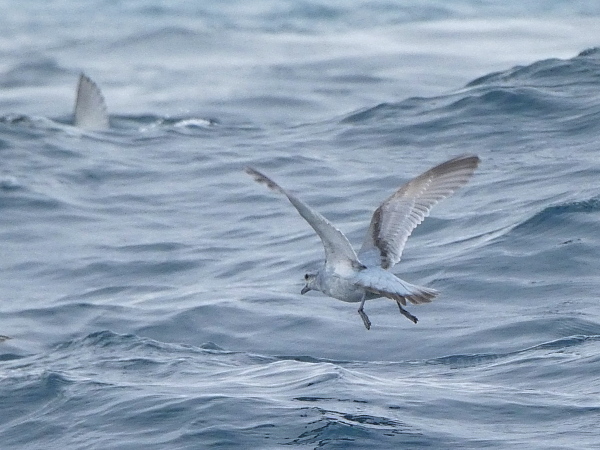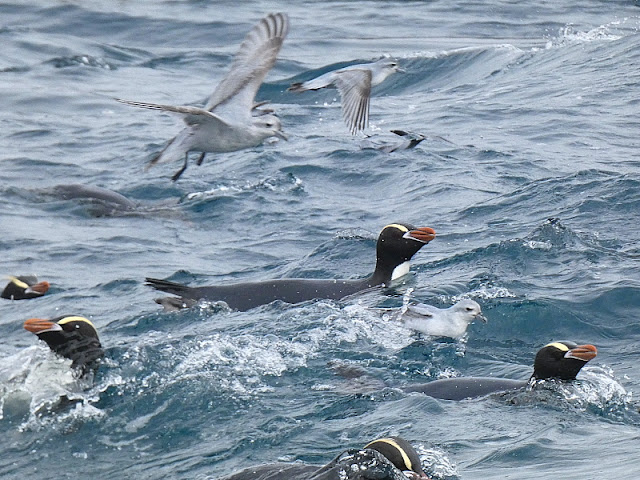Saturday 16 December. We cruised north during the night
timing our arrival at the Bounty Islands for soon after dawn. I was on deck at
05:20 to find conditions rather murky and the sea quite choppy. Not ideal but the
mist cleared during an early breakfast. Zodiacs were lowered and the swell
looked rather ominous but again thanks to the skill of the crew we got off and
an absolutely amazing two hours ensued as we worked our way with Dan around a
few of the islands. They were small (all 22 islands and named granite rocks have a
surface area of about 50 hectares), some very close together and all very rocky
and denuded of any obvious vegetation. They just teemed with birds, think Farne
Islands and multiply by 10 and you still wouldn’t be close, 50x would be more
like it, maybe even 100x. Macquarie might be most impressive place we visited
overall thanks to its penguins but Bounty was right up there - not something I
was expecting at all. Our time was over far too soon and we were back on the
Heritage Adventurer, taking advantage of a second breakfast as we headed east
to the open sea. The rest of the day was another long seawatching stint as we
headed north, with a short break for lunch. The afternoon talks were on Geology,
Cetaceans, Natural Sounds and the pioneering New Zealand Conservationist
Richard Henry, probably quite interesting but I stayed on deck. Poor views of
Black-winged, Cook’s and Pycroft’s Petrels, all of which would have been new,
were frustrations I might have avoided had I been at the talks! At 19:40 we
entered a fog bank and although it showed signs of thinning a couple of times
visibility remained very poor and I gave up at 20:40 and went in for dinner.
During the day I saw 30 Kelp Gulls, 15 Antarctic
Terns, 5000 Erect-crested Penguins, a Wilson's and 35 White-faced
Storm-Petrels, a Southern and 2 Northern Royal, Black-browed
and 10,000 Salvin’s Albatrosses, 3 Northern Giant and 100 Cape
Petrels, 1000 Fulmar Prions, a White-headed, 3 Soft-plumaged,
4 Mottled and 4 White-chinned Petrels, 30 Sooty and 2
Subantarctic Shearwaters, 2 Common Diving-Petrels and 100+ Bounty Shags.
 |
| approaching the Bounties |
 |
| discovered in 1788 by Captain William Bligh and named after his ship before the mutiny |
 |
| Salvin's Albatrosses swarming over the islands |
 |
| Cape Petrels from the Heritage Adventurer |
 |
| despite a heavy swell we managed to get up close in Zodiacs |
 |
| Erect-crested Penguins coming ashore on the Bounties |
 |
| this New Zealand Fur Seal hardly gave them a glance |
























































































No comments:
Post a Comment
Note: only a member of this blog may post a comment.